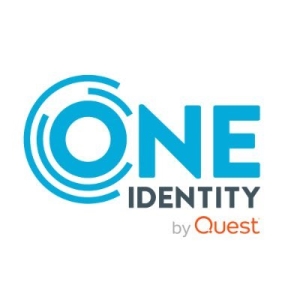Our primary use case has definitely evolved since our very first use case, which was for delegation of rights within Active Directory without having to give folks native rights through Active Directory. That was our biggest driving factor into the use of Active Roles. All the other stuff that it does is a benefit, and we use it all heavily. However, we're very big into using the least privileged model and having the least amount of Active Directory native rights out there, as this cuts down on issues later. By having less people with native Active Directory rights, this cuts down on potential issues that we have to troubleshoot.
It is used in our on-prem Active Directory, but the servers themselves are hosted out of Azure. So, we use IaaS, which is just having VMs in the cloud versus having our VMs on-prem. The only cloud aspect is that VMs are hosted in the Azure IaaS instance. It's a normal VM, which is part of our on-prem Active Directory, but it just happens to be hosted in Azure.
The biggest thing for us is Active Roles saves a lot of man-hours, from keeping groups up-to-date manually or trying to write some sort of script that you have to run, so we don't have to reinvent the wheel. Instead of when every time somebody joins a department, then somebody has to remember to put in a request to add "meet user Joe" to this group, the solution does it automatically for us. Therefore, it saves our business and IT staff time because they do not have to process requests since Active Role can do it for them.
We have about 2000 of these groups in a pretty substantial company of 55,000 employees. Active Roles cuts down on a good number of these tickets every time somebody is brought onboard.
We are a large company who does a lot of department codes. People are coming and going from the company daily. Active Roles probably saves us an upwards of 500 requests a week.
The solution has eliminated admin tasks that were bogging down our IT department. Now, nobody from IT has to take action to update the group in cases when someone joins or leaves the company.
Active Roles has assisted us greatly in provisioning and deprovisioning accounts as folks come and leave the company. We have automation in place that utilizes Active Roles to create and deprovision accounts as folks leave. ActiveRoles Server (ARS) has been instrumental in making sure accounts get cleaned up when they get deprovisioned. Other features of Active Roles, such as Dynamic Groups, have helped us to streamline the process. It's not taking everything away for us, but it's provided us a lot of streamlining. It probably saves, on a per user basis, a half an hour of man-hours between different tasks once you put everything together. This saves us about 40 hours of work for somebody a week.
When our HR department terminates an account, we have a script that talks to Active Roles and sends Active Roles a provisioning command. We have Active Roles set up to do a variety of tasks where deprovisioning is requested. The most important one for us is that after so many days of that account still being disabled and the person being gone, Active Roles will clean that account up for us and delete it out of AD. Therefore, we don't have to manually go in, terminate folks, clean up the accounts, and all that other stuff that happens when someone leaves.
Between the automation of using Active Roles to do our onboarding, policies, and workflows, we can ensure that the data that gets put into Active Directory during the onboarding of any type of object for Active Directory is accurate, meeting our standards so we don't get junk put in there. This has helped streamline things. One of the hardest things from an Active Directory management perspective, without a tool like Active Roles, is controlling how people do something. How I would want to install or set up a new user might be different than the person next to me, e.g., you can give somebody a set of policies to follow when you're not using a product like Active Roles, then it's up to them to interpret that and follow them. Active Roles allows us to enforce those policies so the data that gets put into Active Directory is cleaner and consistent. Having consistent data allows us to do a lot more automations and ensuring people and objects are set up properly.
It definitely improves our security. We are a larger company, so we have a lot of IT staff who are responsible for different parts. Someone does new groups while someone else does servers. There are a lot of hands touching Active Directory. Using a product such as Active Roles, we can delegate those rights to the hundreds of accounts for people to do their jobs. This reduces our risk for somebody's account being compromised. If they have native rights in Active Directory and an account is compromised, that is a higher security risk than just using Active Roles, because the only way somebody can make a change in Active Directory when ARS is involved is to use the Active Roles interface. If someone hacks in and tries that, they're not going to be able to do that. So, it definitely improves our security posture. We have only a handful of people with highly privileged accounts in our environment because of Active Roles.
Active Roles has a PowerShell interface that allows us to let other parts of our environment and other applications, which might need to interface with it, make changes within the Active Directory by utilizing PowerShell commands. We can apply the same principle as our security rights so they have to use Active Roles, reducing our risk from a security perspective.




